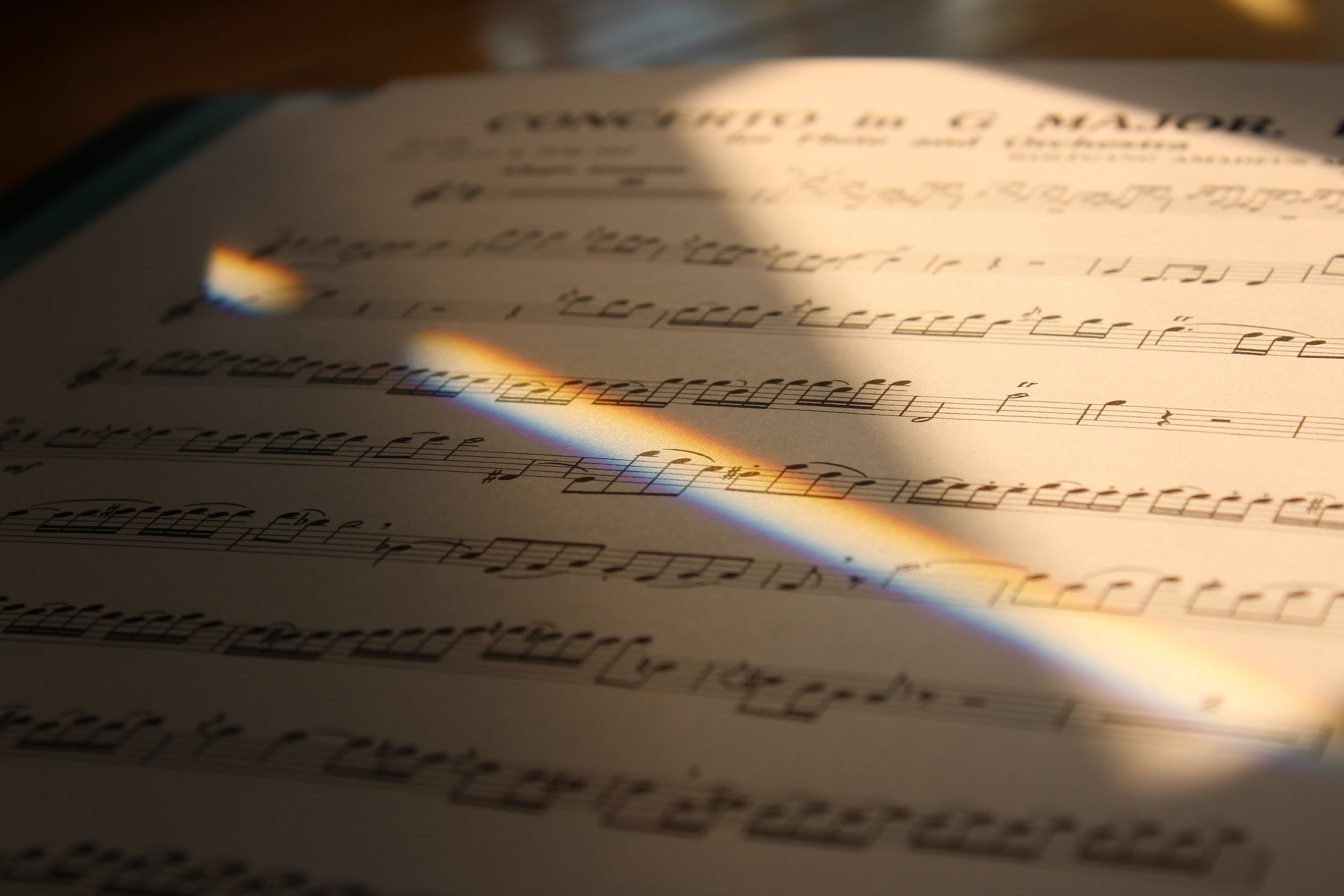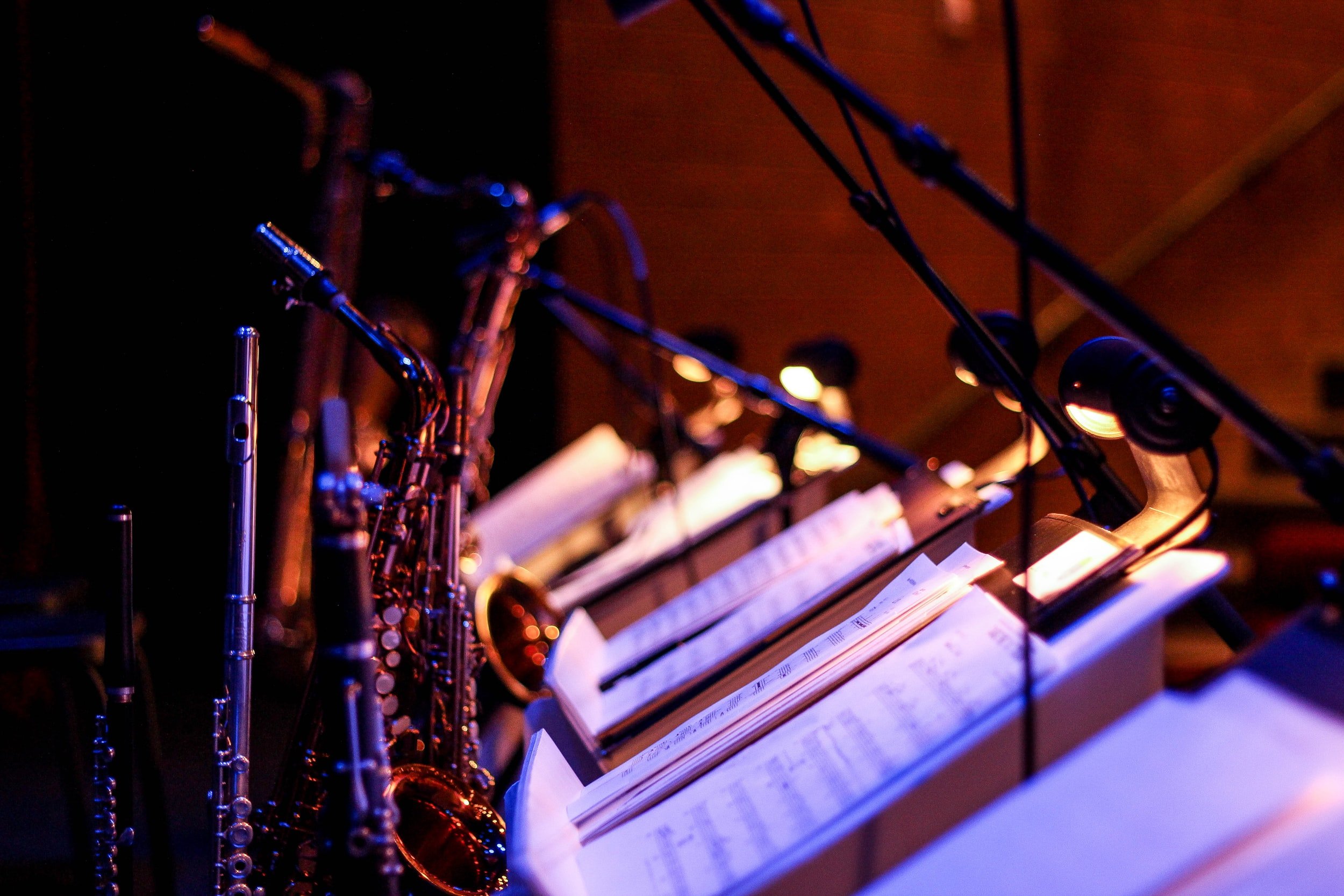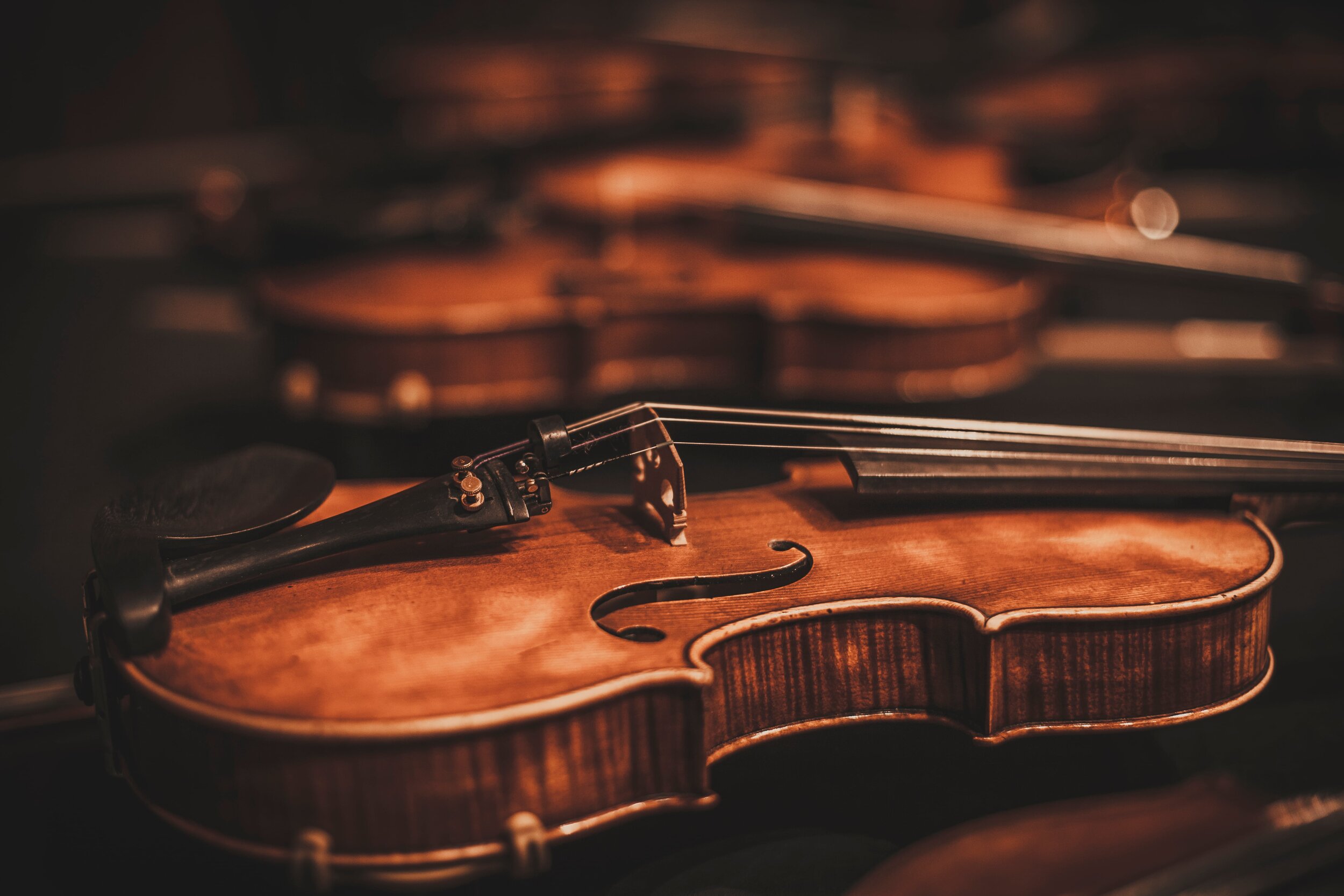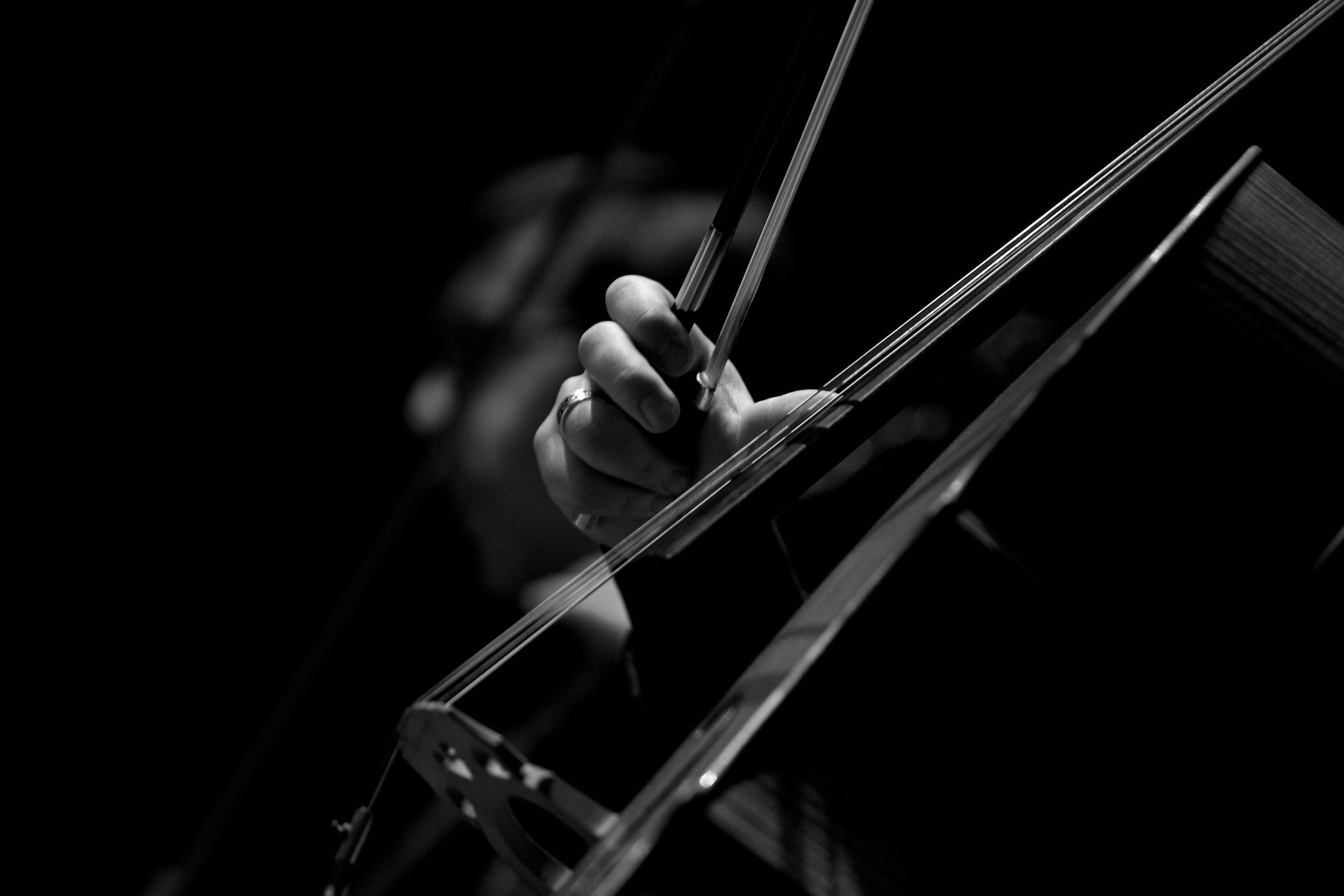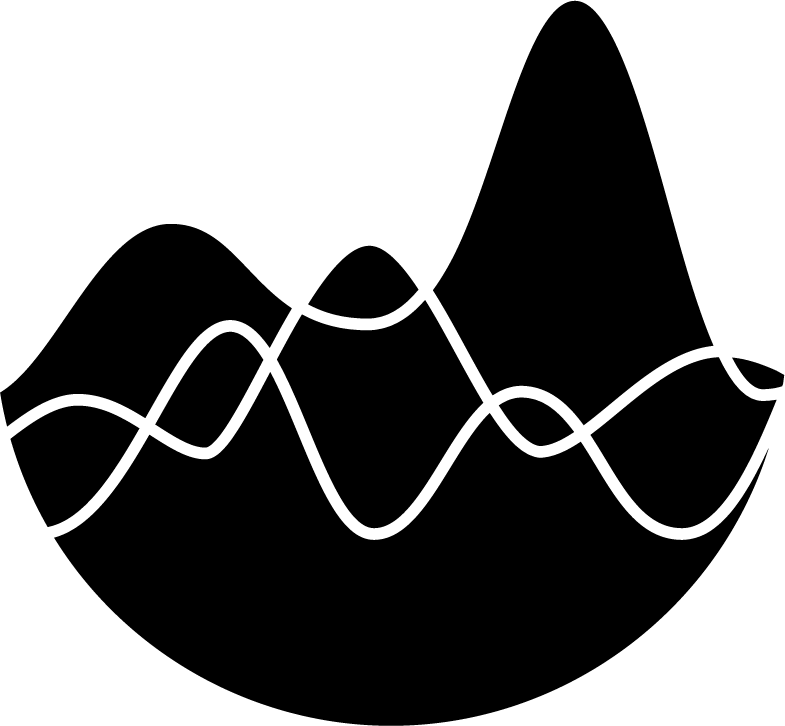Percussion | Scoring
Percussion notation has the same goals as all notation: it should be clear, specific, and easy to follow. Many attempts have been made to standardize percussion notation, yet none have proven definitive. However, following the guidelines set below will allow you to deliver comprehensible, easy to read percussion parts.
THE STAFF. Pitched percussion instruments should be written on five-line staves, in either treble or bass clef. For music that encompasses a large range or that has two simultaneous parts, a grand staff may be used (most common for marimba). Non-pitched percussion, always written in percussion clef, may be notated in a number of ways. If few such instruments are employed, a one-, two-, or three line staff may be used to show these instruments.
When players are required to juggle several instruments a five-line staff, is commonly used. Because every composition requires a different combination of non-pitched percussion instruments, it is impossible to standardize where on the five-line staff an instrument should be indicated—this must be determined on a piece by piece basis. However, once the placement has been determined, it should be used consistently throughout the work. It goes without saying that accidentals may not be used for non-pitched percussion. When possible, after solidifying which instruments are needed, follow the guidelines below to determine their logical placement on the staff:
Snare drum should be placed on the third space from the bottom.
Bass drum should be placed on the bottom space.
Other drums are usually placed on the remaining spaces.
Metallic instruments are usually placed on the lines.
Homogonous instrumental groups should be placed on either lines only or spaces only. This includes collections of five temple blocks, three toms, etc.
Higher instruments should be placed higher in the staff; lower instruments should be lower.
If all the lines and spaces have been taken, some lines or spaces may be assigned to more than one instrument, as long as the instrument is always indicated by name as it enters. It is also possible to add ledger lines to accommodate additional instruments.
Do percussionists prefer to play music that requires many instruments?
Generally speaking, no, purely for logistical reasons. This will come as a disappointment to some orchestrators. It takes time and energy to move percussion equipment on or off the stage, and time to plan the setup in order to best facilitate all passages. Percussionists are often the first ones to arrive at a gig, and the last ones to depart, hauling equipment well after the flutists and violinists have gone home. Scores that require many instruments can also be difficult to decipher. Most players prefer to play music that incorporates few instruments, possibly including several techniques on those instruments.
This is not to say that large percussion batteries should never be required. Part of being a percussionist means performing in such situations. However, if your orchestration calls for only one or two notes from a given instrument, you might want to reconsider how crucial that sound is to your conception. It demonstrates imagination to simulate the effect with an already available instrument, while at the same time showing some compassion for the percussionist!
PERCUSSION LEGEND. At the beginning of the piece, a percussion legend, also known as a percussion key, MUST be included. This shows the location of all non-pitched percussion instruments on the staff. Remember to show the size (small, medium, large, etc.) desired for nonpitched percussion. The legend must occur in the score as well as in individual parts. Also, include a list of all required instruments so that players can easily see what they need. To be safe, catalog the types of beaters required as well, especially if there are any unusual requirements (such as bows, brushes, wooden mallets, etc.)
Some older scores show each instrument on a separate staff, requiring performers to work outwho should play what. It is far more practical to write out a single part for each player. In music that requires a player to make frequent shifts among several instruments, it is occasionally preferable to write each instrument on individual staves. This should only be done if it is clearer than writing everything on a single, five-line staff.
GRAPHIC SYMBOLS. In addition to placing non-pitched instruments consistently on the same line or space of a staff, it is necessary to clarify which instrument is indicated when they occur. By writing the name of the instrument (and mallet type) each time a new entrance occurs in the score, all intentions will be clear. This clarification may be marked above the entrance of the instrument or to the left of the staff. Abbreviations may be used, but clarify these in the legend.
The following solutions should be AVOIDED.
Graphic representation of instruments. Several books and composers have created picture-symbols (known as pictograms) to indicate various instruments. These are not standard and are risky. Even if a legend explains these symbols, it is possible for a player to miss an entrance because they do not remember what the symbol means.
Graphic representation of mallets. The problem is similar to that mentioned above, except that mallet pictures are even less standardized or clear.
Alternate noteheads. Some composers have used alternate noteheads (i.e. triangle, square, or diamond) to indicate different instruments. This also adds to the confusion and should be avoided.
‘X’-heads can be clearly used in a few instances. In all cases, the meaning of an alternate notehead must be explained. Some reasons for ‘x’-heads are:
Playing the instrument in a non-typical way. For example, striking a drum on the rim or shell, hitting a cymbal on the bell, etc. X-heads are useful to indicate alternation between two techniques. When using a non-typical technique for an extended period of time, it is better to use normal noteheads with instructions.
Using an alternate beater type. For example, using brushes on drums or alternating between two types of beaters. Again, this is not recommended when using any single beater type for an extended period of time.
Drum set metals. Because drum set parts are often complicated, hi-hats and other cymbals are often shown with x-heads in this context.
NOTATING DURATION. Some instruments, such as snare drum and claves, have almost no duration. Notating such short durations can be confusing to read if it adds unnecessary rests to the score. Instead, clearly notate the attack points, without concern for the duration, so that the rhythm is clear. However, tied notes and note values of a half note or longer are confusing, since they have no real meaning, and should be avoided.
Other instruments, like cymbals, tam-tam, and bass drum, have longer sustaining power. To indicate the specific length of a note, write that rhythm, using ties if necessary. At the end of the written value, the instrument will be muffled. If a note should vibrate until it normally dies down, write an open tie, “l.v.” (let vibrate), or both. To ensure that a pitch on a sustaining instrument be immediately damped, write the word ‘damp,’ use a staccato, or both. “Choke” or “short” is written to indicate that a cymbal should immediately be dampened after its initial attack.
INFLECTIONS. A majority percussion instruments, both pitched and non-pitched, can be rolled. Rolls can add excitement and intensity and allow for crescendos and diminuendos. An unmeasured roll is indicated with a tremolo mark . In some scores, a trill sign is used to indicate a roll for timpani and snare drum, but this is inaccurate and should not be used, since a trill is technically an alternation between two separate pitches. If there is a tie to the final note of the roll it will end directly at the time of the final pitch. If there is no tie, the final pitch will be clearly rearticulated. When several notes in succession are rolled and not tied, each note will be slightly rearticulated and accented. On mallet percussion instruments, the tremolo sign may be used to indicate a quick oscillation between two pitches. With mallets or other beaters, it is possible to perform a tremolo between two separate instruments. Observe the notation below.
A common drumming technique is to ornament an attack by adding one or more grace notes before a target note. Performed slightly before the beat, grace notes should always be connected to the target pitch with a slur. Such grace notes are called flams, drags, or ruffs depending on how many notes have been added and how they are sticked.
Many instruments, such as triangle, suspended cymbal, cowbell, and bongo drums, can contrast muted and unmuted sounds. To mute, one hand stops the instrument from freely vibrating while it is struck (usually with a beater) by the other hand. Similarly, the two cymbals of a hi-hat can be opened and closed by a foot pedal. ‘+’ indicates muted, and ‘o’ indicates unmuted, just as it does with brass notation. Though these indications are clear in themselves, a brief note of explanation adds absolute clarity. Cymbals and gongs can be scraped. In addition to instructions, write a diagonal arrow moving downwards and to the right.
The most common articulations for percussionists are accents. Staccatos indicate that the pitch should be muffled soon after it is articulated, similar to guitar and harp. Tenutos have little meaning, and should not be used. Slurs are used to show phrases and to connect grace notes to their target pitch. If you wish to indicate which hand to use where, write ‘L’ for left and ‘R’ for right, but these decisions are usually left to the performer. Other notational conventions, more specific to individual instruments, are included in the discussion of those instruments. Below are a few, well-notated examples of percussion writing.







